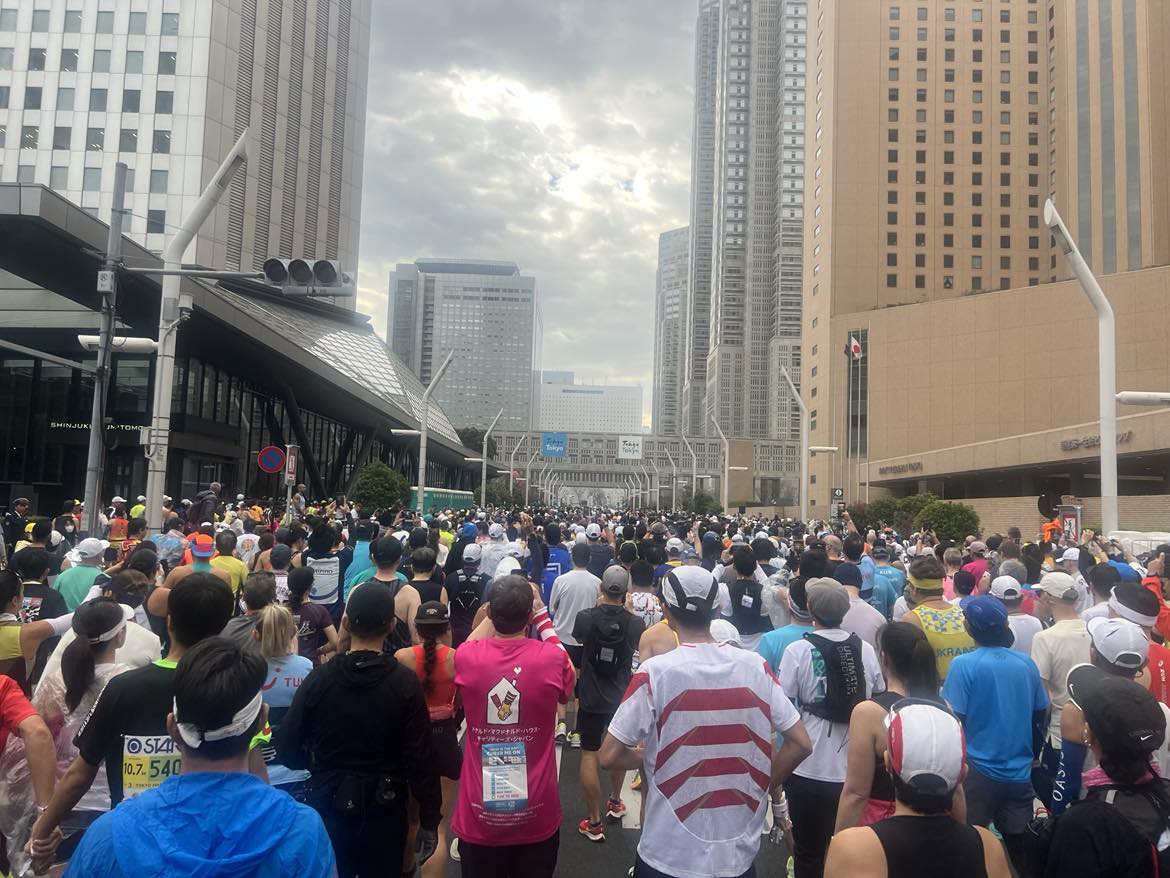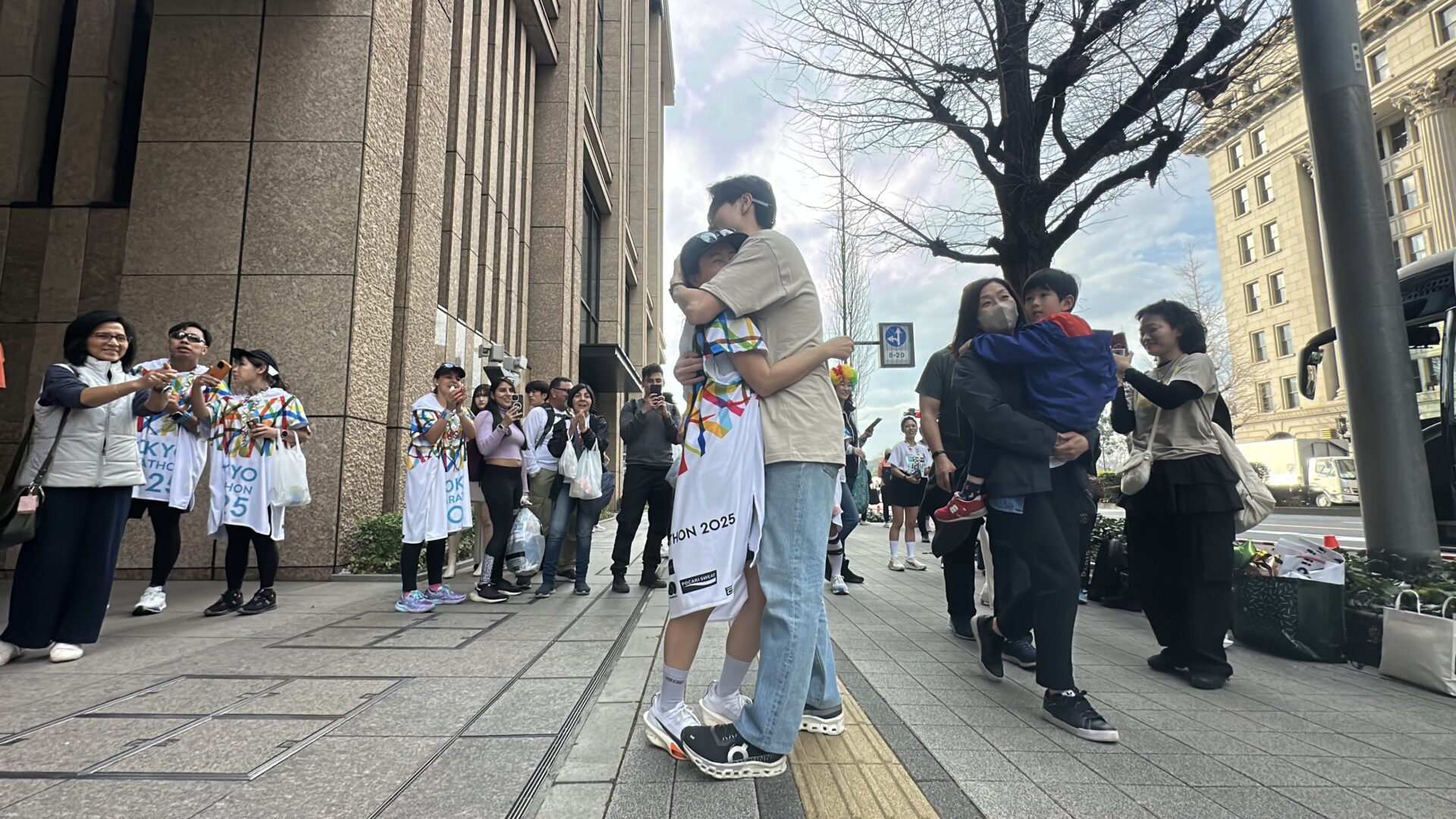Interview Relay
42 Stories of the Tokyo Marathon
〜Connecting Hearts〜
My Tokyo Marathon is…? To be a zest for living for many people
- Supporters
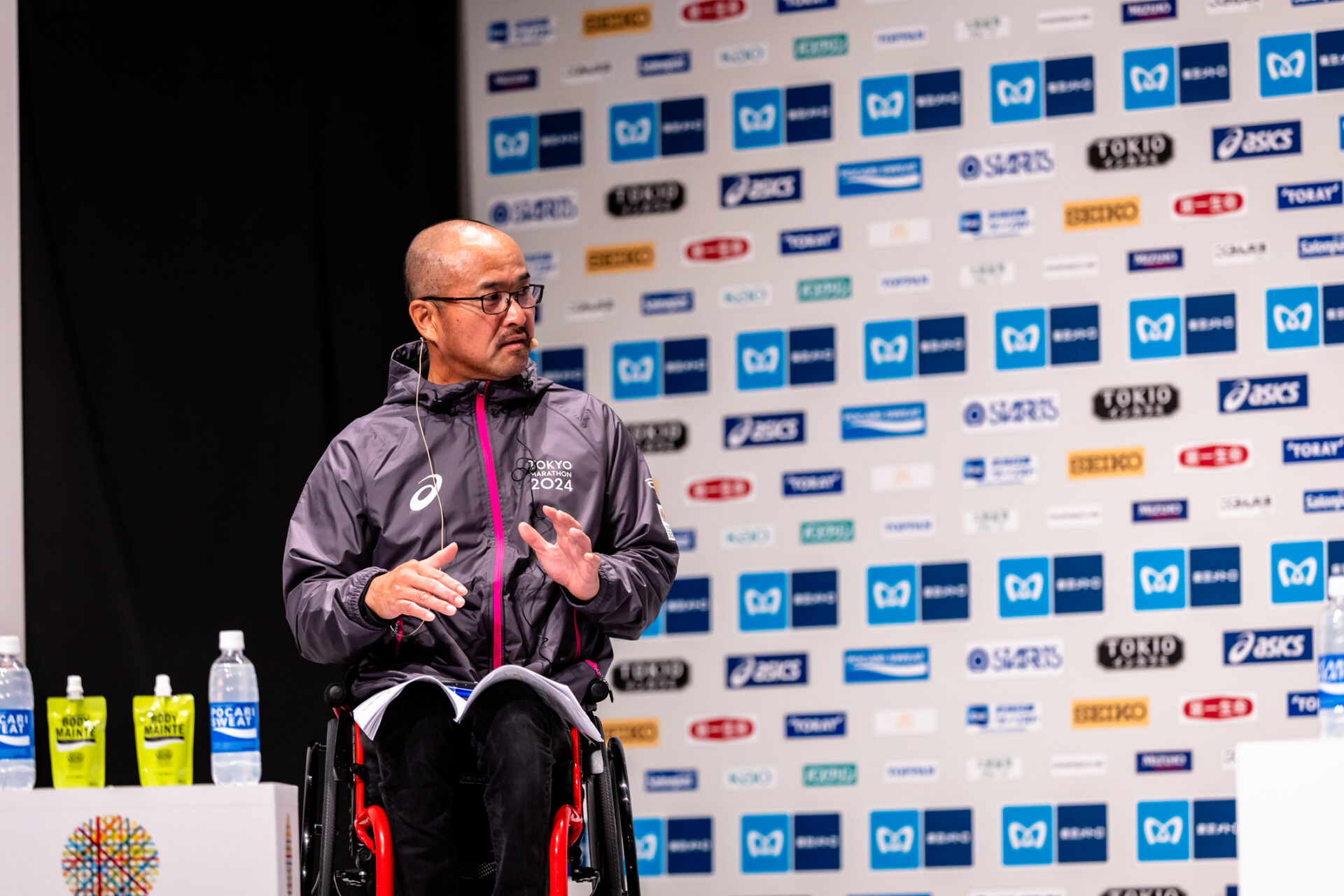
Interview Relay: 42 Stories of the Tokyo Marathon ~Connecting Hearts~
Introducing Masazumi Soejima, Wheelchair Race Director. A wheelchair marathon has been attracting rising attention every year and has now become one of the major events of the Tokyo Marathon.
What are the appealing points and values of the Tokyo Marathon from the perspective of Mr. Soejima who is the winner of the first Tokyo Marathon and is currently playing a role as Wheelchair Race Director. He will share about the Tokyo Marathon experience and touch on the thinking leading up to the milestone 20th anniversary in 2027.
Aiming to convey the appealing points of the wheelchair marathon and enhance its values

――Referring to your experience before how you came to assume the position as Wheelchair Race Director?
I won the men’s wheelchair division of the first Tokyo Marathon held on February 18, 2007. Following that victory, I began competing in major marathons starting in April of the same year. During my trips to events in Boston, London, Berlin, Chicago, and New York, I had more opportunities to meet with the Tokyo Marathon staff and had more chances to share updates and information about wheelchair races with them. Through such interactions, I felt that the Tokyo Marathon has deepened its understanding in wheelchair racing and has been directed toward its development. Such background led me as a wheelchair race adviser for the Tokyo Marathon. Later, when the Tokyo Marathon became one of the Abbott World Marathon Majors, I was entrusted with the role of Wheelchair Race Director.
――What was your impression of the Tokyo Marathon before becoming its Wheelchair Race Director?
I had always recognized the Tokyo Marathon as one of the largest races in Japan, where we could showcase wheelchair marathon racing to a broader audience through our performance. It was also a meaningful opportunity to share the appeal of the wheelchair race in our own words through media coverage. However, we actually faced a harsh reality. In the early years of the Tokyo Marathon, the training scenes of elite runners and sponsor-related content were preferentially broadcasted. The start of the wheelchair marathon wasn’t shown on TV at all. I was very disappointed with this situation.
Moreover, when I was asked a question, “How long is a wheelchair marathon?” by an event official at the award ceremony, I came to the full realization that our sport has not been acknowledged yet. With this experience, I made a firm decision that we must have many people to learn about the appealing points and the presence of the wheelchair marathon and enhance the values. We will continue to work hard to develop the wheelchair marathon, ensuring it is well-understood and that the Tokyo Marathon becomes even more exciting and engaging.
Aiming to become “a special race for wheelchair runners in the world”
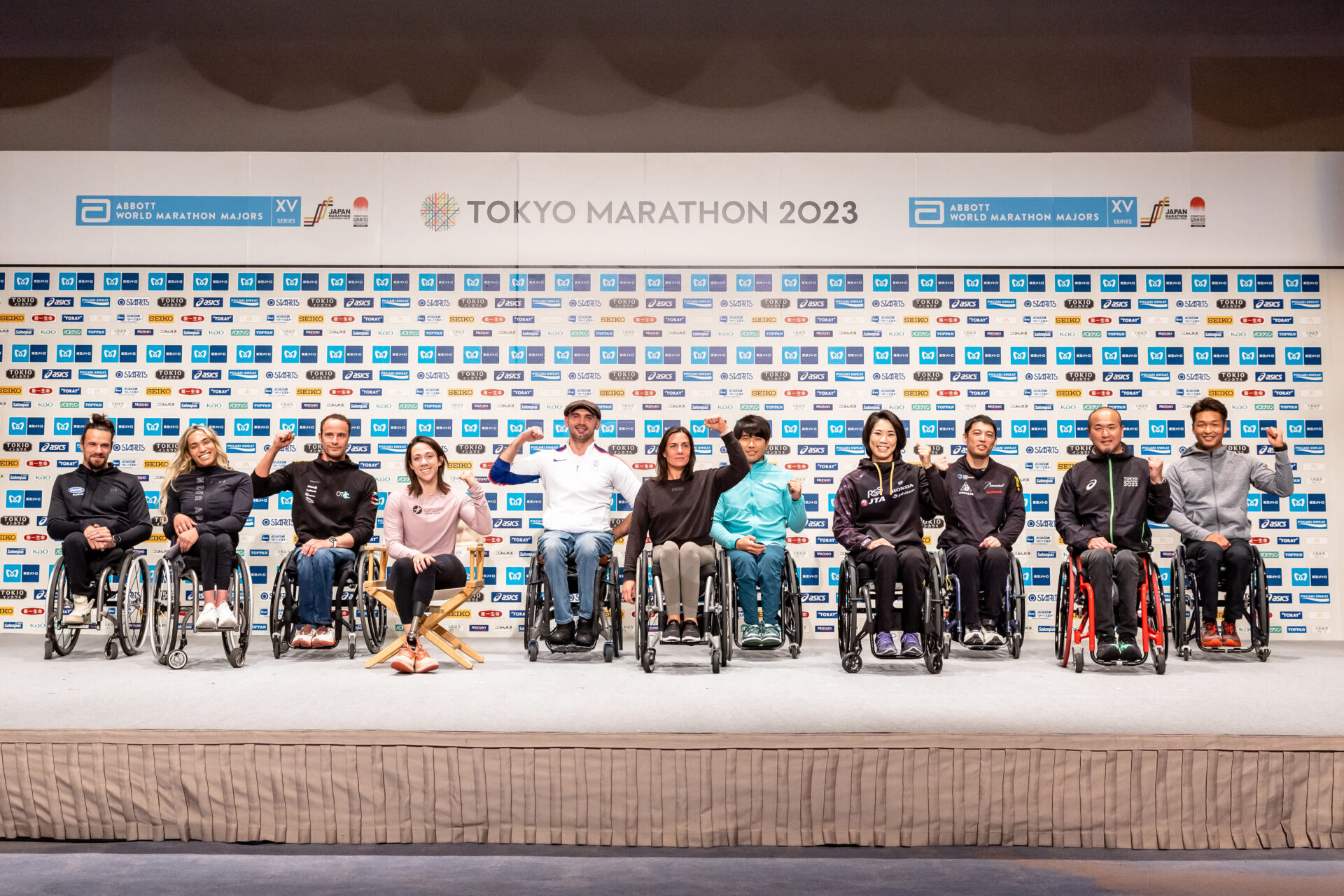
――Now that you have been appointed as Wheelchair Race Director, what do you think is the appeal of the Tokyo Marathon?
I think that “the Tokyo Marathon is the safest and most secure race in the world”. The course has no steep uphill or downhill roads or sharp corners, it is very runner friendly. Further, the road surface is well-maintained and smooth. There are many cheerers on the sideline, but nobody crosses over the course, so the safety is firmly assured.
In particular, surface smoothness is the greatest wish for wheelchair runners. The wheels we use are lightweight and thin enough to roll stably, but there is a higher risk of going flat due to bumps and dips, cuts, and sharp road surfaces. Of all the Abbott World Marathon Majors, the Tokyo Marathon has a top-level, well-maintained course and therefore, we can feel safe and focus on the race.
On the other hand, Tokyo has some issues too, such as strong winds blowing through the tall buildings and it is difficult to predict which way the wind blows. If there is no such wind, we could have run faster. Nevertheless, we can boast to the world that the Tokyo Marathon is safe and easy to run.
――What is the role of Wheelchair Race Director, and what is your vision for the role of Tokyo Marathon’s Wheelchair Race Director?
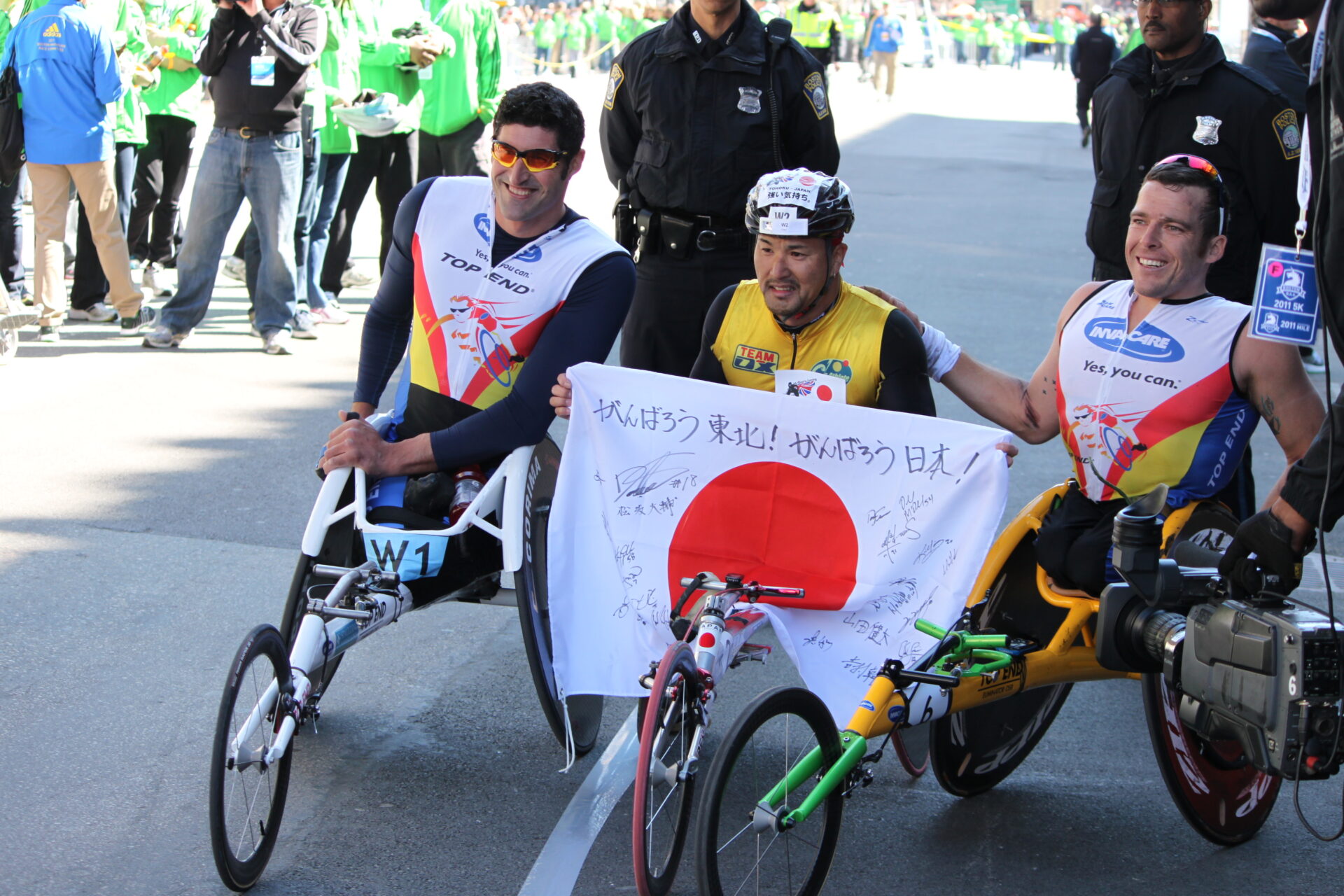
As a wheelchair runner, I have chances to compete against athletes around the world in the races other than the Tokyo Marathon. The Tokyo Marathon already offers a wonderful environment as “the safe and secured race,” To make it even more exciting, we are working to attract fast athletes and expand the leading group. The larger the leading group becomes, the more tactics and strategies are developed among the group, and then, the more the athletes compete against and inspire each other, the faster records will be made. If the top-level athletes participate, the level of the sport will be elevated, and if their passionate battles are communicated to many people, it will raise the profile of the wheelchair marathon.
If the Tokyo Marathon develops to become a “worth challenging race for many fast runners”, it will be a target stage for next-generation athletes. Thus, we are aiming to create a race that they will yearn for and want to try. We will continue to devote our best efforts to enhance the appealing points of the wheelchair marathon as a sport and to make the Tokyo Marathon a special race for wheelchair runners around the world.
――What are the unique features of the elite race and how is it different from other competitions?
The elite field of the wheelchair marathon is also a race in which professional athletes and top athletes participate. To participate in, severe qualifying standards and qualifications are set. The purpose of the race is a struggle for victory and breaking records, and the tactics and strategies among the athletes will be the highlight of the race. In addition, a large cash prize and breaking-record bonus are usually set which is an important source of income for athletes. A course is designed so that new records can be made; therefore, a high-speed race is anticipated. Unlike city marathons, the nature of competition and results are emphasized. In the elite race, world top-level athletes meet together and fascinate spectators with their performance.
“Next” motivations of runners, cheerers and race staff members
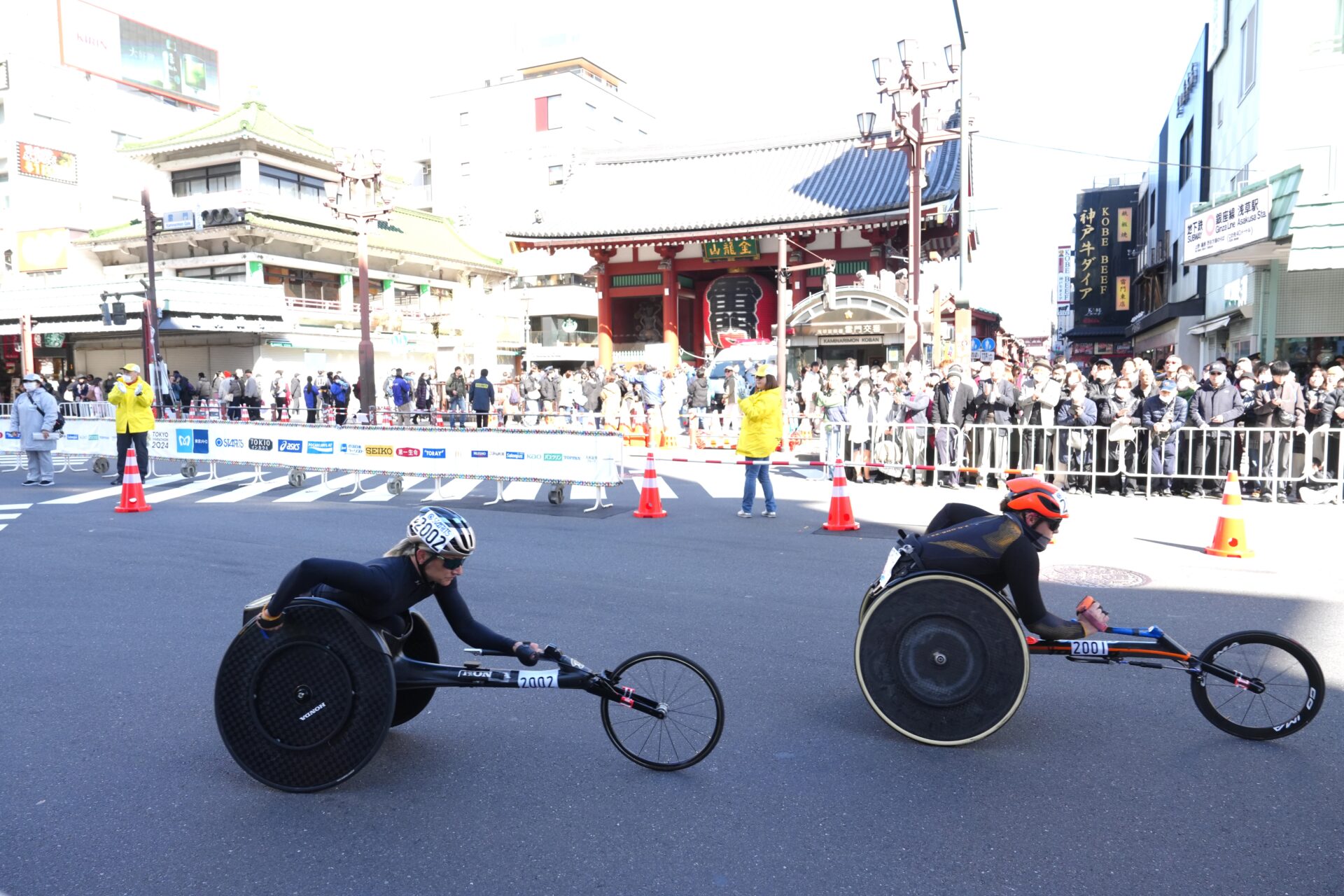
――What is the value and role of the Tokyo Marathon, for Tokyo and the city of Tokyo?
The Tokyo Marathon is the communicator of the appealing points of the city and values of Tokyo to the world. As one of the Abbott World Marathon Majors, it draws attention from Japan and abroad and significantly contributes to the enhancement of the city branding, set in the beautiful streetscape and sightseeing spots of Tokyo. Further, the economic impacts from participation of numerous runners and tourists is substantial, boosting accommodations, dining and tourism. This, in turn, contributes to the overall revitalization of the city as a whole. With the participation of city runners and supports on sidelines, Tokyo is entirely filled with a sense of unity and vibrancy, resulting in the promotion of sports culture and health consciousness. Therefore, I think that the Tokyo Marathon is an event that enhances the value as a sport city and showcases the appealing points of Tokyo.
――What is the value of the Tokyo Marathon for elite runners, citizen runners, and volunteers?
The Tokyo Marathon offers incredible value, allowing us to have the entire metropolitan city to ourselves for running. The support on the sidelines that runners receive leads to the vitality of the runners, and elevates their motivation to try hard. Only runners genuinely know about the importance of support and how we are left with an impression that encourages runners to go beyond their real strength, which is the experience runners will have. That will become the “next” motivation; we will even want to support someone next time. In the Tokyo Marathon, communication among runners, cheerers, volunteers, and race staff members generates a large wave that leads to their “next” motivation, and we all become vitalized. I think the value of the Tokyo Marathon is enormously high.
――The Tokyo Marathon Foundation has set a vision of “the Tokyo Marathon, the best marathon in the world, held in Tokyo, the best city in the world” based on three pillars: “The safest and most secure race in the world,” “The most exciting race in the world,” and “The warmest and most friendly race in the world.” Please tell us your thoughts on this and how you plan to achieve it as the Wheelchair Race Director.
It overlaps with what I have mentioned earlier, and I think that the Tokyo Marathon is at present “the safest and most secure race in the world.” To create an exciting race, we aim to maximize the appeal of Tokyo’s beautiful cityscape, energize the event with enthusiastic support on sidelines, and showcase the race’s highlights to the world through digital live broadcasting and video technologies. By valuing a cooperative relationship with volunteers and local residents, it is important to nurture a spirit of warm hospitality. We will organize a support system to empathize all runners, operate in a way that is friendly to runners with disabilities and runners from overseas and aim to make the race inclusive to everyone.
The “pride of Japan” is admired by people worldwide.

――What does the Tokyo Marathon mean to you, Wheelchair Race Director Soejima? #MyTokyoMarathon is…?
For me, the Tokyo Marathon is a zest for living. At the first Tokyo Marathon, I ran with a firm determination that “I am definitely going to win the championship! And let people in Japan learn about the wheelchair marathon, and let me convey this in my own voice!” My thinking then still continues to be my motivation today. In the coming Tokyo Marathons, we intend to welcome and support athletes with their respective goal and strong thinking just like myself. Runners love running. Creating a race where we can fully infuse such feelings, truly enjoy and feel how wonderful it is to run—I will work on it while having a great time myself, too. I would like to cultivate the Tokyo Marathon into an event that becomes a goal and a zest for living for many athletes.
――How would you like to develop the Tokyo Marathon in the future? Or how do you foresee it developing?
In the future, we aim to develop the Tokyo Marathon further as the world’s best and to convey the appealing points that are unique to Tokyo. Furthermore, we aim to make the race which attracts top runners and city runners worldwide. More specifically, we will prepare a support environment where elite runners can improve their records, strengthen support for runners from overseas and realize the race where top runners and city runners can feel satisfied. In addition, by using digital technologies, we hope to make the Tokyo Marathon the “pride of Japan” admired by people all over the world.
――Please share with us any other thoughts about the Tokyo Marathon.
The Tokyo Marathon is a place where everyone including runners, cheerers and supporters can unite. For runners, it is a stage to achieve their goals and dreams as well as a moment when the entire city is filled with a vibrant and impressive atmosphere. I hope that the Tokyo Marathon is not just for running but will be a meaningful event for everyone involved and that the Tokyo Marathon continues to grow as a zest for living and to be a place where the joy of running and the spirit of challenge can be shared. Further, to create a race that next-generation runners can target and dream of, I will continue running and keep supporting.




